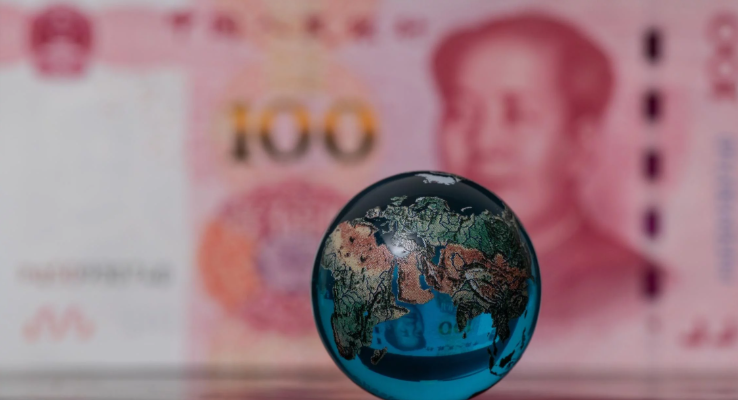As of end-September 2024, Chinese banks’ cross-border lending to emerging markets and developing economies (EMDEs) made up about 23% of their total lending abroad ($520 billion out of $2,219 billion, left-hand panel of Figure 1). This is only a small part of their total lending, as their domestic market looms large making China the world’s largest banking system (Cerutti and Zhou 2018). That said, in terms of balance sheet characteristics and funding structure, they often resemble their global peers from advanced economies (Casanova et al. 2021).
From a borrower perspective, Chinese banks are the main cross-border lenders to EMDEs. Not only do Chinese banks report bank claims on most EMDEs (140 out of 164 EMDEs as of 2024), but they are also the most important lenders to more than 60 EMDEs among all bank nationalities extending cross-border loans to them (right-hand panel of Figure 1). This heavy reliance on Chinese banks attracted a lot of attention during the COVID-19 pandemic (e.g. Horn et al. 2022, 2023, Jiang 2025).
Figure 1 The expansion of Chinese banks1


Note: 1 Counterparty countries are classified into advanced, offshore and EMDEs. Excluding claims on the home country by foreign affiliates (so-called backflows). 2 Cross-border claims on 140 EMDEs.
Sources: BIS locational banking statistics (by nationality); authors’ calculation.
Although lending to EMDEs has stagnated, non-mainland affiliates keep a central role
Although Chinese banks still stand out as the top cross-border lender to most EMDEs, their global expansion has recently slowed. From 2016 to 2019, their market share in total cross-border lending grew by 5 percentage points, reaching 17% in 2019 (Figure 2, left-hand panel). 1 This increase in Chinese banks’ market shares came at the expense of European and Japanese banks, but not US banks.
Chinese banks not only lend to EMDE from their headquarters, but also through their affiliates outside of mainland China, especially from those located in Hong Kong SAR and other Asian countries. As shown in the right-hand panel of Figure 2, Chinese banks lend cross-border to EMDEs from affiliates in 14 different advanced economies (AEs), 7 EMDEs in Asia, 6 EMEs in other EMDEs and 6 offshore centres (including Hong Kong SAR and Macao SAR). In terms of shares in global lending to EMDEs across all locations, Chinese banks lent about 5.7% from affiliates in advanced economies, 1% in other EMDEs, and 20.6% in offshore centres as at end-2023, respectively.
Figure 2 The expansion of Chinese banks’ lending to EMDEs has slowed recently1


Note: 1 Based on cross-border claims on 140 EMDEs while excluding claims on the home country of respective EMDE parents (so-called backflows). 2 As a percentage of total cross-border claims on EMDEs by all 36 parent bank nationalities. 3 Excluding claims on China by foreign affiliates of Chinese banks. EMEA refers to CN banks hosted in EMDE Asia (China, Chinese Taipei, Indonesia, India, Korea, Malaysia, Philippines); OFF = offshore jurisdictions (Bahamas, Hong Kong SAR, Cayman Islands, Macao SAR, Panama and Singapore); ADV = advanced economies; EMEO =other emerging markets and developing countries.
Sources: BIS locational banking statistics (by nationality); authors’ calculation.
Shifts in cross-border lending correlations: From trade to FDI
As shown by Casanova et al. (2024), the correlation patterns of cross-border lending and bilateral economic ties with EMDEs have changed. Before the pandemic, Chinese banks’ cross-border lending was strongly correlated with bilateral trade. However, this relationship has weakened. From 2020 to 2022, bilateral FDI became more closely linked to both total amounts and market shares of Chinese banks’ cross-border lending. By contrast, portfolio investment mostly shows a negative correlation, which, as highlighted in Cerutti et al. (2023), is explained by the bias in Chinese investment of debt and equity towards advanced economies.
How does this shift in correlation lending patterns relate to various foreign policies and geopolitical considerations? The outstanding amounts of Chinese banks’ cross-border lending tend to increase either when the borrower country participates in the Belt and Road Initiative (BRI) or when its central bank has swap lines with the People’s Bank of China (PBOC). As distinct from that, higher market shares in lending only tend to be correlated with BRI participation, especially after the pandemic. BRI membership also has strengthened the link between cross-border lending and FDI, particularly from 2020 to 2022.
By contrast, countries that are closer to the US either through trade or UN voting patterns don’t exhibit these stronger correlation patterns between cross-border lending and FDI. More precisely, our data does not support that connector countries (those displaying simultaneous increases in export shares to the US as well as imports and FDI from China) exhibit stronger correlations between cross-border lending and FDI (see Casanova et al. 2024). The same holds for countries whose UN voting behaviour was closer to that of the US, which might be linked to potential present and/or future access to the US markets. Further, regarding sanctions, there is no clear evidence that Chinese banks have increased lending to countries affected by Western sanctions.
Chinese banks’ cross-border lending to EMDEs reflects higher borrower risk tolerance
How does the average borrower of Chinese banks look like? Our data suggest that the average borrower country of Chinese banks differs significantly from that of other bank nationalities. As shown in Figure 3, this finding is based on five measures of a country’s creditworthiness or risk profile: whether a country exports commodities or fuel, its governance perceptions, its average sovereign rating, and two indicators on indebtedness.
More precisely, Figure 3 shows that the average borrower country from Chinese banks is more likely to be a commodity exporter and is generally less creditworthy or riskier compared to borrowers of other banks, based on factors like corruption perceptions, sovereign ratings, and debt levels. As shown in Casanova et al. (2024), these average borrower profiles reflect that Chinese banks have higher levels of risk tolerance relative to other bank nationalities, since these borrower risk characteristics are positively correlated with Chinese banks’ market shares, but not with their amounts of cross-border lending.
Figure 3 Average borrowers’ profile of Chinese banks and other lenders, end-2023
Weighted by shares of cross-border lending to counterparty borrowing countries


Note: 1 The list of counterparty countries is restricted to 85 EMDEs as in the regression sample. 2 Weighted score derived for all individual bank nationalities, and then the aggregate score for 35 bank nationalities is calculated as weighed score of individual parents.
Sources: IMF Fiscal Survey; BIS locational banking statistics; authors calculations
Source: cepr.org



